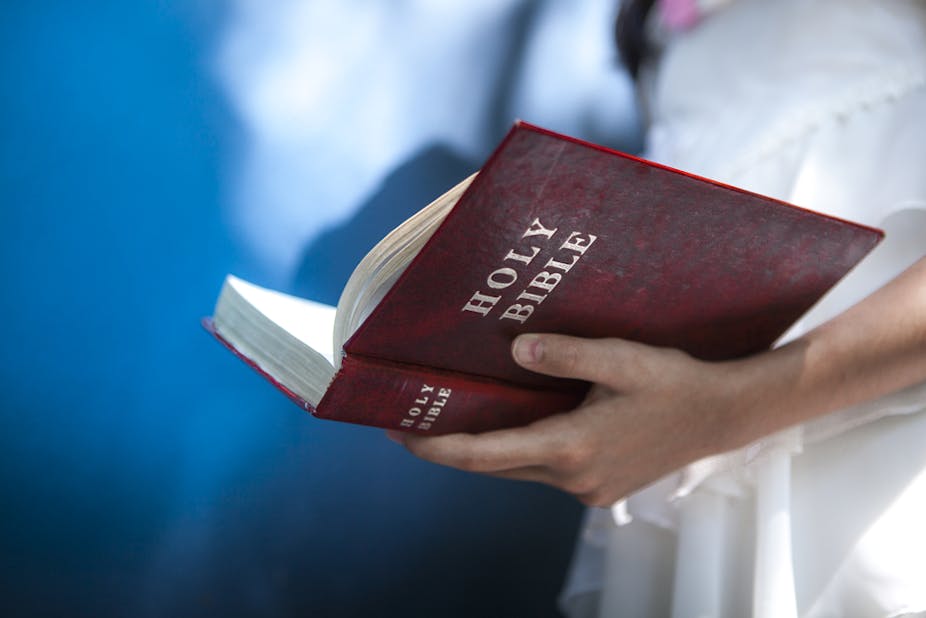Once again, some religious groups are crying foul and accusing the government of violating their freedom of religion. Victoria’s Education Minister has clarified the policy on Special Religious Instruction for the state’s schools and all hell has broken forth.
What was clarified?
As is often the case, reactions to policy reflect fears rather than facts. The Department of Education and Early Childhood Development’s recently published policy defines Special Religious Instruction as:
instruction provided by churches and other religious groups and based on distinctive religious tenets and beliefs.
It does not refer to teaching about religions in the school curriculum - where trained teachers may, and are increasingly encouraged to, include information about world religions in what they teach.
The policy carefully regulates who may offer Special Religious Instruction, under what conditions, using what materials accredited by which organisations. This policy clarification addresses many of the issues that have been recently raised about Special Religious Instruction.
It ensures that Special Religious Instruction is an “opt-in” offering. It makes it clear that the school does not certify or warrant what is taught. It ensures that those not opting in have a suitable alternative.
The policy ends with three paragraphs regulating “Religious activities outside Special Religious Instruction”. This appears to be the source of the objections. What is proscribed are religious activities in the school that are “led, conducted by or at the instruction of staff or parents/visitors/volunteers”.
The policy does not proscribe religious activities initiated by students, religious acts conducted by students that are part of their faith requirements, nor does it proscribe religious symbols or dress. The students’ freedom of religion is intact.
Teachers do not have the freedom to use their authority as teachers to promote their religion, or irreligion. That would be an abuse of position.
The policy does not ban student prayer, Bible reading, Koran recitation, or Buddhist meditation, or Sikhs from dressing according to the requirements of their beliefs.
The provisions proscribe outside organisations coming onto campus to recruit, promote, proselytise or conduct religious activities. Presumably the same would apply to political or other groups. Schools are very careful about who is allowed into the school at any time. In that sense this provision is not anti-religious any more than preventing a political party from recruiting.
Why did the policy need clarifying?
Victorian state schools should be “secular” and Victoria interprets secular to be religiously neutral, not anti-religious. If teaching about religions in the curriculum were to be demonstrated to be unbalanced and negative, religious groups might have a basis for complaint.
Until recently the provision of Special Religious Instruction in schools was not carefully managed and the occurrence of excesses has prompted this policy clarification. Excesses included students who were not Christian being forced to take Christian Special Religious Instruction as no alternative was offered for those opting out; the distribution of material that was in conflict with school inclusion policy; and instances of proselytisation.
Religious diversity increasing
The clarified policy is responding not only to the heartfelt protests of some parents who did not want their children exposed to Special Religious Instruction as currently conducted, but also to Victoria’s changing religious demography.
Both nationally and locally, Australia became both more and less religious in the last census. The numbers and percentage saying that they had “no religion” increased (to 22.3%). There was also a 17.3% decrease in the percentage not responding to the “religion” question, meaning that more people either identified with a religion or stated “no religion”.
This religious/not religious divide is sharper at the school age and among young parents. Some are very keen about their religion and others are quite firm in their non-religion. In the 5-24 age group, 26.8% are Catholic, 26.2% have no religion, 1.2% are Hindu, 3.0% Muslim, 2.4% Buddhist, 3.8% Uniting and 13.3% Anglican. Religious diversity is the wave of the future.
The old days when most Australians were British Protestants (63% in 1947) have passed. Catholics are now the largest religious group, but they are likely to be outnumbered by the non-religious in the next census. The presupposition that the classroom is nominally Christian no longer holds, nor does the assumption that religion is unimportant to students.
While it will be difficult for some religious groups to realise that they are now minority groups, it would be very un-Australian for the newly dominant group to deny rights to them. I would remind religious groups in Victoria that they lobbied to prevent the introduction of a secular human ethics course as a Special Religious Instruction option. Such a course was introduced in New South Wales.
In this context clarifying the Special Religious Instruction policy is just as important as introducing teaching about religions by qualified teachers into the curriculum. The Department of Education has shown great care, the ability to listen to a wide range of concerns and to respect the intent of the legal provision of the opportunity for Special Religious Instruction while ensuring that it is not used to bring other programs into the schoolyard.

